Welcoming Andreessen Horowitz
By Jon Callaghan, July 9, 2009
This week Marc Andreessen and Ben Horowitz announced their new $300 million venture fund. This is really good news for the very early stage venture market. It’s yet another visible indicator of the ongoing reinvention occurring in venture capital, and it represents a significant step in the re-emergence of institutionally-backed early stage venture capital. We’re excited to have Marc and Ben working in this segment, and the addition of more talent and resources in the early stage market is great news for entrepreneurs.
Our mission at True is to help entrepreneurs realize their dreams. In 2005, we spotted an opportunity to build a firm that was more adaptable to the needs of today’s entrepreneurs. We innovated by re-defining the relationship between investor and entrepreneur in a fundamental way, simplifying previously complicated structures, and amassing talent and resources to ease the specific process of starting and building a new company.
We did all of this as former entrepreneurs ourselves, and our overarching goal was to re-align capital with creativity. At True, we firmly believe that the entrepreneur is the center of all power, creativity, and wealth creation in the venture capital model. Our firm and our deals are designed with the entrepreneur as customer.
When we launched in 2005, there were only a handful of super-angel investors in the very-early market: Ron Conway, Reid Hoffman, Ram Shriram, Josh Kopelman (then with his evergreen funds) – to name a few. Institutional capital was scarce, and this was a problem because entrepreneurs had fewer resources in the beginning, and less choice
The great news for entrepreneurs is that this is changing rapidly. Since 2005, we at True have raised 2 institutional funds totaling approximately $375 million, Josh and the team at First Round closed on an institutional fund, as did Stewart and Gilman at Alsop-Louie, and Brad Feld at Foundry. Back East, Spark and Union Square Ventures have each raised two institutional funds, and Alan Patricoff started Greycroft. In addition, many very talented angels such as Mike Maples, Jeff Clavier, Ron Conway (Baseline and Ron’s other angel investments), and Paul Graham at YCombinator have raised institutional dollars.
We estimate that there is now well over $1 billion of institutional capital available to startup entrepreneurs. Make no mistake, there are many talented groups willing to write checks as small as $50K to get a good team and a good idea off the ground.
This could not have happened at a better time. The combination of great entrepreneurial talent, high capital efficiency, widespread broadband infrastructure, and the maturity of mobile and social computing platforms has resulted in tremendous product innovation and massive market opportunities. True witnessed this dynamic first in our consumer investments like Meebo, Automattic, and Sphere, but, since 2005, we have also seen Moore’s law blast away cost in enterprise 2.0, infrastructure, and hardware. We have steadily expanded our investment focus and products into these markets, and we are about to close on our second hardware investment this month.
We are fortunate to live in an incredibly disruptive time.
Which brings us back to reinventing venture capital. The best entrepreneurs want less from VCs today: less capital and fewer constraints in order to take more risk earlier. But the the best are demanding more in terms of new products, services, alignment, attitudes, and business practices from their investors. This means new expectations around board roles and responsibilities, more flexible deal structures, aligned efforts to add value, broader syndicates that amass the resources and participation of multiple groups and multiple angels. This means innovation in venture capital.
We’re excited about the arrival of Andreessen Horowitz to this segment because it means more choice and power available to the early stage entrepreneur. More talent, dynamism, and focus on these challenges will help us all to better serve our customers (entrepreneurs), more quickly modernize the early stage capital markets, and foster fundamental innovation. In removing barriers to entrepreneurial creativity, we will reinvigorate the US economy.
If you are an entrepreneur today, this is an historic time to chase your dreams. With over $1 billion in fresh seed capital in the very early stage market, what are you waiting for?

